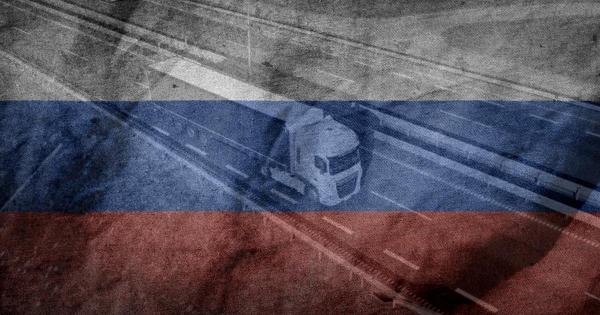
Welche EU-Waren dürfen Russland erreichen?
Die Entscheidung Russlands, EU-Spediteuren zu verbieten, die am 10. Oktober in Kraft tritt, ist eine Reaktion auf eine frühere Sanktion der EU gegen russische Spediteure, die ab dem 8. April nicht mehr durch EU-Länder reisen dürfen.
Dennoch werden Waren weiterhin auf dem Landweg aus EU-Ländern über Russland an Endverbraucher geliefert. Um dies zu ermöglichen, werden an Zollterminals in den Grenzgebieten der Oblaste Pskow, Kaliningrad, Leningrad und Murmansk, der Republik Karelien und St. Petersburg, Waren entweder von ausländischen Fahrzeugen auf russische und weißrussische umgeladen oder ausländische Anhänger an russische und weißrussische Traktoren gekoppelt.
Diese Regelung gilt nicht für das Kaliningrader Gebiet bei internationalen Straßentransporten mit Ursprung im Ausland und mit Bestimmungsort im Kaliningrader Gebiet und in umgekehrter Richtung.
Ausländische Fahrzeuge können weiterhin das Territorium Russlands passieren, um Waren an ihren Bestimmungsort zu liefern, wenn ihre Umladung ihre Qualität beeinträchtigen könnte oder wenn es technisch nicht möglich ist, sie umzuladen. Dies gilt insbesondere für verderbliche Waren, pharmazeutische und medizinische Produkte und ähnliches.
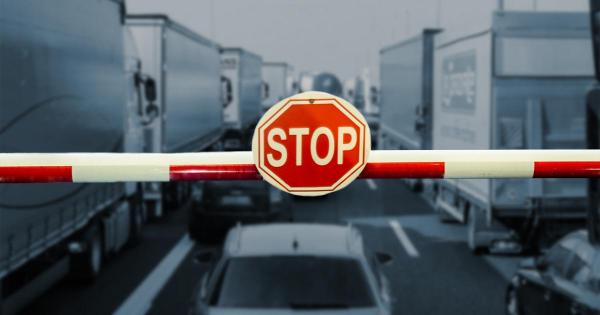
Die Tschechen weiten die Grenzkontrollen aus
Die am 29. September vorübergehend eingeführten Grenzkontrollen bleiben bis zum 28. Oktober in Kraft.
Die Maßnahme wurde ursprünglich für einen Zeitraum von 10 Tagen eingeführt, also bis zum 8. Oktober. Da die Grenze weiterhin geschützt werden muss, hat die tschechische Regierung beschlossen, die Grenzkontrollen weitere 20 Tage fortzusetzen.
„Die Zunahme der Migration ist dramatisch, wie die Grenzkontrollen deutlich gezeigt haben, daher wäre es nicht sinnvoll, sie jetzt aufzuheben. Beim bevorstehenden Treffen der EU-Innenminister werden wir uns auch mit der Situation entlang der Westbalkanroute befassen“, sagte Vít Rakušan, tschechischer Innenminister.
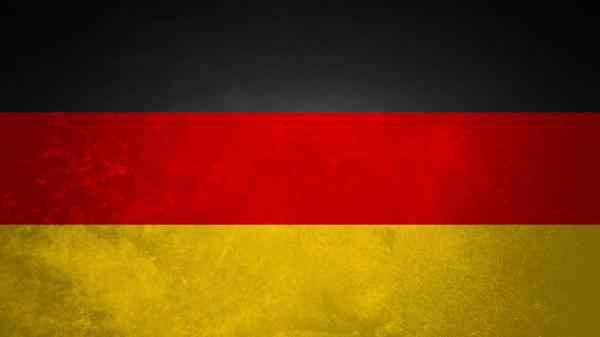
Bavaria: a driving ban for lorries over 7.5 tons on the Weißbach bridge
Owing to the poor structural condition of the bridge over the Weißbach river and the damage analysis that has not yet been completed, the local authorieties of the Berchtesgadener Land district have issued a driving ban for HGVs with a MAM of over 7.5 tons.
Since the condition of the bridge is still unclear, the road construction authority responsible for the B21 road that passes over it considers it necessary “to take further precautionary measures until the final results are available”. “It is therefore recommended that HGV traffic should be reduced to a necessary minimum – initially until the final result of the damage analysis are available.”
The B21 is the only road that passes through the so-called “little German corner”, which cuts into the Austrian territory between the Melleck border crossing and Salzburg. It is also the only route that emergency services can use to reach the hospital in Bad Reichenhall.
The first precautionary measures have already been taken by the road construction authorities. The speed limit on the bridge has been reduced to 30 km/h and concrete safety barriers have been erected on both sides of the road.
The only vehicles excluded from the driving ban are lorries delivering supplies to the districts of Berchtesgadener Land (BGL), Traunstein (TS), Zell am See (ZE) and Kitzbühel (KB).
Information about the HGV ban will be posted at all important intersections throughout the districts of Berchtesgadener Land and Traunstein, and traffic from the Austrian district of Lofer will be diverted via the A8 motorway back to Austria.
The ban will come into effect once the information signs are put up by the Traunstein Building Authority.
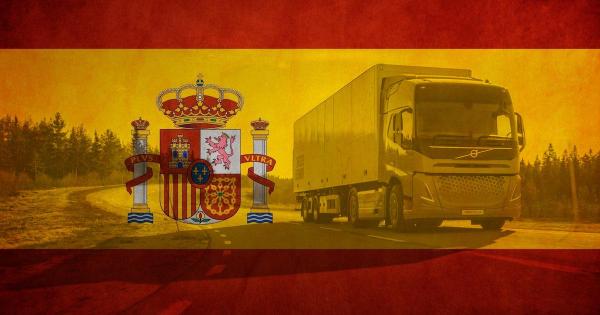
HGV restrictions in Catalonia
Owing to forecasts of significant increases in traffic volume on the 9th and 11th of September, an additional restriction has been introduced on some road and motorway sections for vehicles or combinations of vehicles with a maximum authorised mass of more than 7.5 tons, which are required to use the right lane and must not overtake other vehicles and drive faster than 80 km/h.
The restriction on Friday, September 9, will apply on:
➖ the AP-7 motorway, between KP 126, exit 12B at La Roca del Vallés, Granollers and the junction with the C-60 in La Roca del Vallés, and KP 172, exit 25 at Martorell and the junction with the A-2 in the Motoresll commune, from 5:00 PM to 9:00 PM;
➖ the AP-7 motorway in the territory of Terres de l’Ebre, where there are only two lanes, between KP 257, exit 35 at Vila-seca, Salou, Reus S. and Port Aventura, in the municipality of Vila-seca, and KP 344,8 the border between Tarragona and Castellón, in the municipality of Ulldecona, from 3:00 PM to 9:00 PM.
The restriction on Sunday, September 11, from 3:00 PM to 10:00 PM will apply on:
➖ the northbound C-32, between KP 114, at the junction 113 at Canet de Mar, in the municipality of Canet de Mar, and KP 84.5, at the junction with the B-20, in the municipality of Montgat.
➖ the northbound AP-7 motorway, between KP 111.1, exit 11 at Sant Celoni and Montseny in the commune of Sant Celoni, and KP 133.8, exit 13 at Granollers, Montornès del Vallès and Vilanova del Vallés, in the municipality of Montornès del Vallès;
➖ the southbound AP-7 motorway, between KP 158, where the B-30 joins the AP-7, in the commune of de Sant Cugat del Vallés, and KP 213 in the commune of Banyeres del Penedès, the fork junction AP-7 / AP-2
➖ the B-23, between KP 8, exit 8 at Sant Feliu de Llobregat and Molins de Rei Sud, in the municipality of Sant Feliu de Llobregat, and KP 15.5 on the B 23, at the junction with the AP-7, in the municipality of Castellbisbal.

Diesel lorries to be completely banned in Lyon by 2026
The French city of Lyon has voted in favour of establishing a stricter Low Emission Zone (ZFE) from next year. The use of diesel lorries, which is now restricted, will be banned altogether from 2026.
As a result of the last vote, the ban on passenger cars with category 5 environmental vignettes (diesel cars registered before 1 Jan 2001) and unclassified private vehicles came into force on 1 September 2022. According to the adopted schedule, the ban will be gradually extended between 2023 and 2026 to include vehicles belonging to categories 4 (Euro 4), 3 (Euro 5) and 2 (Euro 6).
The Low Emission Zone includes:
– almost all the municipal districts of Lyon,
– parts of Villeurbanne, Bron and Vénissieux contained within the Laurent Bonnevay ring road
– the entire municipality of Caluire-et-Cuire.
It is worth mentioning that the Low Emission Zone (ZFE) in the city of Lyon was established on January 1, 2020. The ban applies to HGVs and light commercial vehicles used for transporting goods with Crit’air 3, 4 or 5 stickers (category N), which means that these vehicles can no longer drive or park in the ZFE. Failture to comply entails a penalty of € 68 for light commercial vehicles and € 135 for trucks.
To support hauliers, the city of Lyon offers subsidies for the procurement of clean vehicles (running on natural gas or electric: BEV or FCEV):
• light commercial vehicles: EUR 5,000 for 100% CNG or 100% electric, EUR 8,000 for hydrogen vehicles ,
• lorries (with MAM of over 3,5 t): EUR 10,000 for 100% CNG or 100% electric vehicles, EUR 13,000 for hydrogen vehicles,
• electric powered tricycle: EUR 3000.
Hauliers purchasing HGVs or LGVs, can receive additional amount of 1,000 euros when they sign a green gas or green electricity supply contract for a minimum of 2 years.
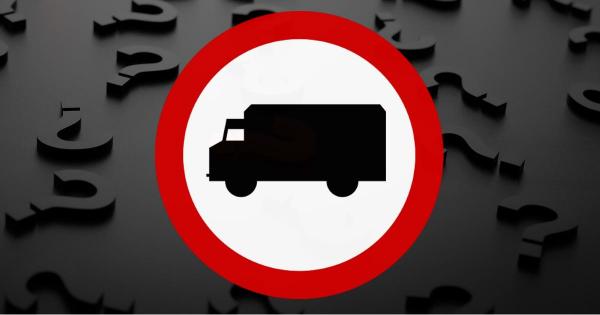
HGV driving ban on the A2 section of the Poznań bypass
From the 20th of September 20, heavy goods vehicles with a maximum permissible weight of more than 3.5 tons will not be allowed to use the third, leftmost lane of the section of the A2, which consititues the southern part of the Poznań bypass. The ban will apply between the Poznań West and Poznań Krzesiny junctions in both directions.
The ban is one of the changes in the permanent traffic organization on the A2 section of the Poznań bypass with a view to improving road safety and traffic flow. Information about the ban will be communicated to drivers by means of lane control signs located on the gantries above the motorway carriageways.
Drivers are reminded that the maximum speed on the A2 section of the Poznań ring is 120 km/h for passenger cars and 80 km/h for heavy goods vehicles. Compliance with the regulations, including the requirement of using the right lane, helps to maintain smooth traffic and road safety.

3. Oktober – darf ich auf Landesstraßen fahren?
Am 3. Oktober feiert Deutschland den Tag der Deutschen Einheit.
❗ An diesem Tag gilt leider im gesamten deutschen Straßennetz zwischen 00:00 Uhr und 22:00 Uhr ein Fahrverbot für Gütertransportfahrzeuge mit einem zulässigen Gesamtgewicht von über 7,5 Tonnen.
Darüber hinaus haben aufgrund des Feiertags in Deutschland auch Österreich und Italien Lkw-Fahrverbote eingeführt, um Staus an der Grenze zu vermeiden.
⛔ Österreich: Das Fahrverbot für Fahrzeuge mit einem zulässigen Gesamtgewicht über 7,5 t gilt von 00:00 bis 22:00 Uhr auf der Inntalautobahn (A12) und der Brennerautobahn (A13) in Fahrtrichtung Deutschland.
⛔ Italien: Das Fahrverbot für Fahrzeuge mit einem zulässigen Gesamtgewicht über 7,5 t gilt ab 00:00 Uhr und 22:00 Uhr auf dem Abschnitt der A22 von Sterzing/Vipiteno bis zur österreichischen Grenze für fTransporte in Richtung Norden, wenn deren Bestimmungsort Deutschland ist oder über Deutschland erreicht werden muss.
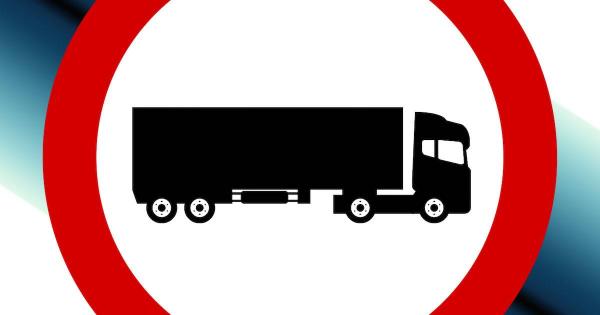
Italien – zusätzliches Fahrverbot auf der Brennerautobahn A22
Das Fahrverbot besteht auf dem Streckenabschnitt der italienischen Brennerautobahn A22 von Sterzing bis zur Brennerstaatsgrenze am 03. und 26. Oktober.
Das Fahrverbot gilt für Gütertransportfahrzeuge mit einem zulässigen Gesamtgewicht von über 7,5 Tonnen von 00.00 Uhr bis 22.00 Uhr des 03. and 26. Oktober.
Im Zusammenhang mit den auf diese Tage fallenden Feiertagen (03.10. – Tag der Deutschen Einheit und 26.10 – Nationalfeiertag in Österreich) besteht in beiden Ländern ein Feiertagsfahrverbot.
⛔ Das Fahrverbot am 03. Oktober 2019 betrifft den Streckenabschnitt von Sterzing bis zur Brennerstaatsgrenze für Transporte in Richtung Norden, wenn deren Bestimmungsort Deutschland ist oder über Deutschland erreicht werden muss.
⛔ Das Fahrverbot am 26. Oktober 2019 betrifft den Streckenabschnitt von Sterzing bis zur Brennerstaatsgrenze für alle Transporte in Richtung Norden.
Fahrzeuge, welche zum Zeitpunkt des Inkrafttretens des Fahrverbots bereits auf der Brennerautobahn in der Provinz Bozen unterwegs sind, können auf dem Parkgelände der SA.DO.BRE in Sterzing anhalten bzw. auf anderen längs der Autobahn im Gemeindegebiet der anliegenden Gemeinden zur Verfügung gestellten Stehplätzen sowie auf den von der Verkehrspolizei festgelegten Parkplätzen, u.7. nach den Modalitäten die, je nach Verkehrslage, von der Polizeibehörde für angemessen erachtet wird.
Von dem Verkehrsverbot sind die nachstehend angeführten Lastfahrzeuge ausgenommen:
• Fahrzeuge, die zu folgenden Zwecken dienen: ausschließliche Beförderung von Schlacht- oder Stechvieh, leicht verderbliche Lebensmittel, Getränkeversorgung in Ausflugsgebieten, unaufschiebbare Reparaturen an Kühlanlagen, Abschleppdienst, Pannenhilfe; vom Straßeneigner für den Einsatz in Notfällen zur Aufrechterhaltung des Straßenverkehrs genutzte Fahrzeuge und Fahrzeugzüge; Fahrzeuge des öffentlichen Sicherheitsdienstes, Müllabfuhr,
• Personentransport im regulären Linienverkehr, sowie für unaufschiebbare Fahrten Lastkraftwagen des Bundesheeres und landwirtschaftliche Arbeitsmaschinen;
• Fahrten im kombinierten Güterverkehr Straße Schiene, wofür eine Stellplatzreservierung vorgelegt werden kann, welche die Angaben über das Fahrzeugkennzeichen, bzw. das Fahrtdatum und die Uhrzeit des vorgemerkten Zuges enthält.
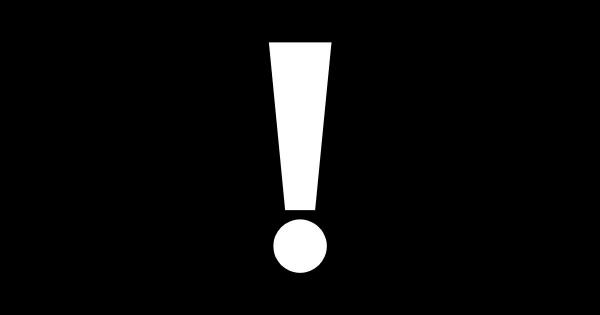
Tirol: zusätzliche Verkehrsbeschränkungen für Lkw
Die Luegbrücke auf der Brenner Autobahn (A13) zwischen Gries am Brenner und Brennersee wird derzeit umfassend saniert. Die Arbeiten werden bis Dezember dauern, es kommt in den unterschiedlichen Bauphasen immer wieder zu Änderungen der Verkehrsführung.
Von Sonntag, 09. Oktober, 22:00 Uhr, bis Freitag, 14. Oktober, 05:00 Uhr, wird im Bereich der Luegbrücke in beide Richtungen nur ein Fahrstreifen zur Verfügung stehen.
Daher werden von Montag, 10. Oktober bis Donnerstag, 13.Oktober jeweils ab 05.00 Uhr Dosierungsmaßnahmen auf der Inntal Autobahn (A12) bei Kufstein für Lkw gesetzt.
Witterungsbedingt kann es zu erminänderungen kommen.
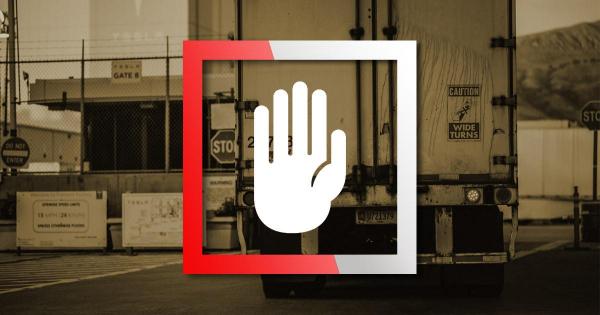
Österreich führt Grenzkontrollen ein
An 11 Grenzübergängen sind die Kontrollen für zunächst 10 Tage wieder eingeführt worden.
Nach Angaben des österreichischen Innenministeriums sind die ab 29. September wieder eingeführten vorübergehenden Grenzkontrollen an der österreichisch-slowakischen Grenze eine Reaktion auf die zunehmende illegale Einwanderung. Die Grenzkontrollen würden auf der gesamten Länge der Grenze, vor allem aber auf den Hauptrouten durchgeführt, sagte der Ministeriumssprecher.